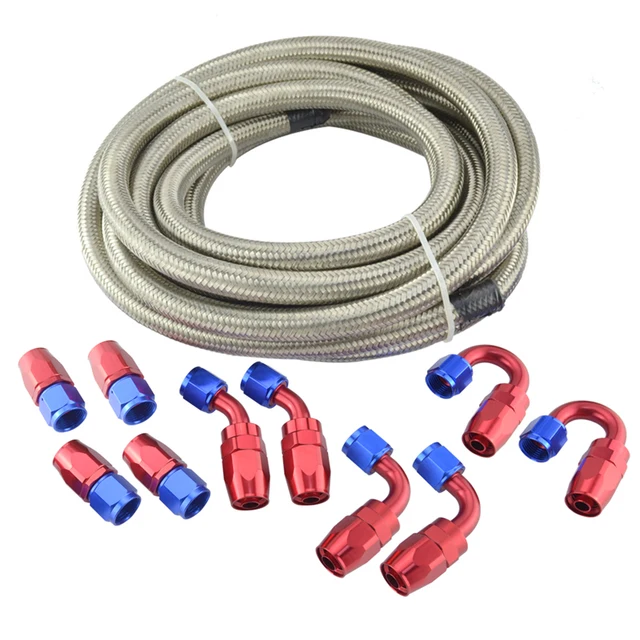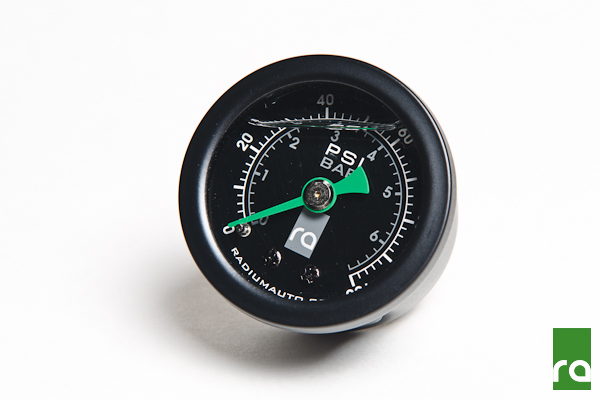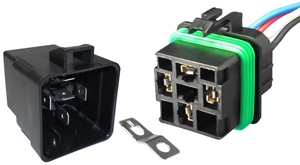You would be surprised to know that almost every single car that is delivered to the shop for tuning with work done elsewhere encounters one of these three very common issues, and results in additional time and spending required.
- Low Fuel Pressure
- Non existent, or poor boost control
- Engine Misfiring
While we won't be covering the last two points in this article, we will be going into depth about Low Fuel Pressure.
THE BASICS
Let's go over some of the fundamental components of a fuel system first.
-
Fuel Pump; Typically a single simple pump that pushes the fuel towards the engine.

-
Fuel Lines; Tubes and hoses that carry the fuel to the engine and return the un-used fuel to the tank.

-
Fuel Rail; Much like the intake plenum, the fuel rail is a sort of reservoir for fuel, waiting under pressure for the injectors to open.

-
Fuel Injectors; Electronically controlled solenoid valves that are triggered by the ECU to allow the flow of fuel from the fuel rail into the intake runners (Some engines inject into other parts of the engine, but fundamentally similar)

-
Fuel Pressure Regulator; A spring loaded valve that opens at a set pressure, allowing fuel pressure to build in the fuel rail and lines. The regulator is also responsible for providing a path for the excess fuel to return to the fuel return line and in turn the fuel tank.

It's important to understand what all of these parts do so that you may understand fuel flow, and pressure - and that they are different. Fuel flow is typically measured in Liters Per Hour (LPH). This really only means that under the given test parameters and circumstance, that the fuel flow would equate to this amount. If you change any of the variables, such as fuel line diameter, fuel pump voltage, fuel system pressure, fuel temperature, or fuel type - the fuel flow will also change.
Understanding Fuel Pressure
Fuel Pressure is also commonly misunderstood. The pump doesn't really build fuel pressure. The fuel pump merely provides fuel flow. Without a restriction, there would be no pressure - pressure is merely resistance to flow.

To understand this, we can make a simple garden hose analogy. If you've ever used a garden hose, you will agree that if you hold the hose without a nozzle the water will simply run out without really going anywhere far. If you block the end of the hose you will feel quite a bit of resistance - the hose wants to straighten out, the water is escaping still but now it shoots out much further. The water supply has not changed - yet we observe two different pressures as well as flow rates.
In fuel systems, we see similar trends. Higher pressures typically mean lower flow rates. Lower pressures typically mean higher flow rates. When picking a fuel pump, it's important to consider the fuel flow rate at the pressure you intend to operate it. Many fuel pumps are very good at operating at lower pressures, but completely fall on their face when operated at higher pressures.
Rising Rate Fuel Pressure
It's actually the spring loaded valve inside the fuel pressure regulator that allows the fuel pump to build pressure. Many of these aftermarket units are adjustable, allowing the user to configure the fuel pressure. On nearly every turbocharged engine, we will see what we call a rising rate fuel pressure regulator.
Rising rate fuel pressure regulators are responsible for equalizing the pressure differential between the fuel rail and the intake manifold.
Imagine you have 40 psi fuel pressure, and 0psi air pressure in your intake manifold - then you inject fuel for 4ms. Now imagine the same, but this time with 30psi air pressure in the intake manifold - the pressure differential is now only 10psi - that would result in about 25% of the fuel volume being injected when compared to the manifold with 0psi. It's the pressure of the air inside the intake manifold that pushes back against the fuel as the injector opens that causes this differential to be problematic.
To address this phenomenon, we've been blessed with the rising rate fuel pressure. Simply said - it's a fuel pressure regulator that is plumbed into the manifold's pressure using a rubber hose - and it will apply the manifold's pressure to the regulator to increase the opening pressure, in turn increasing fuel pressure. This allows for us to have a very minimal pressure delta between fuel rail and intake manifold, and thus much more consistent, predictable, and linear fuel dosing
.
This is all important to understand, because when picking a fuel pump - you think "I'm going to run 43psi fuel pressure" But in reality, you're not. You're going to run that PLUS whatever boost pressure you're planning to run. That could be a total of 70+ Psi for many applications. Lots of fuel pumps won't flow anywhere near their advertised LPH at the pressure you're possibly running.
Common mistakes made when installing a high flow fuel pump
I would say that practically every single fuel pump installation we inspect is done incorrectly. The fuel pumps often come with instructions that are very simple and clear, but most people seem to think they don't need to follow the precautions or that they won't have any issues if they just "drop it right in"
-
Fuel Pump Power Supply; The fuel pump originally in your car likely ran off a 10-15a power supply. The high flow fuel pumps often require a 25-30 or even 40a power supply. This entails not only upgrading the fuse, but also the wiring, and connectors - ensuring that every component can carry the additional load. Anything in this circuit that can't carry the full load will become a source of resistance, and heat - potentially melting the connections and even starting a fire - Near your fuel tank - does that sound like a good time? No, fires are bad. Very bad. So be sure to upgrade every component leading up to the fuel tank - Including the electrical bulkhead connection at the fuel hat if necessary.

-
Installing an upgraded relay; Almost every high flow fuel pump will recommend that you install a 30-40a relay to supply the power to the pump. Most cars don't come with a 30-40a relay. They typically have a 20a relay - which may work, for a bit, but in the end you'll end up with low voltage when the contacts inside of it are burnt, and then - well, your fuel pump slows down and you melt your engine while racing for pink's.

- Fuel Pump Ground; Sometimes, people go through all the trouble of upgrading the power supply wiring, and then they leave the skinny little ground wire as-is. This also needs to be able to carry the additional load. Nearly as much as the power supply side does. Upgrade the ground wiring and all connections. One of the most common mistakes people make, is they do everything we just went over, and then they bolt the ground down to a completely painted surface. This is just as bad as forgetting to do everything mentioned above! Clean, bare metal surfaces, or directly bolted to a common ground that can carry the additional load, or even directly to the battery if it's in the trunk. Any poor connections are likely to result in low fuel pump voltage, and in turn reduced fuel flow. That leads to engine failures.

When we get around to tuning cars with improperly installed fuel pumps, it usually becomes apparently right when we're doing wide open throttle cars. We always log fuel pressure and have a special table set up to compare the fuel pressure to the intake manifold pressure to ensure the pressure differential remains constant. If we see any change in the relationship, you've got fuel pressure problems. If you continue to tune and disregard the issue, you may be able to temporarily work around it, but you're likely going to end up with melted pistons or detonation. We all know that's a hell of a lot more expensive than upgrading some basic wiring and cleaning grounds.
If you don't follow instructions, you could end up with pistons that look like this.




